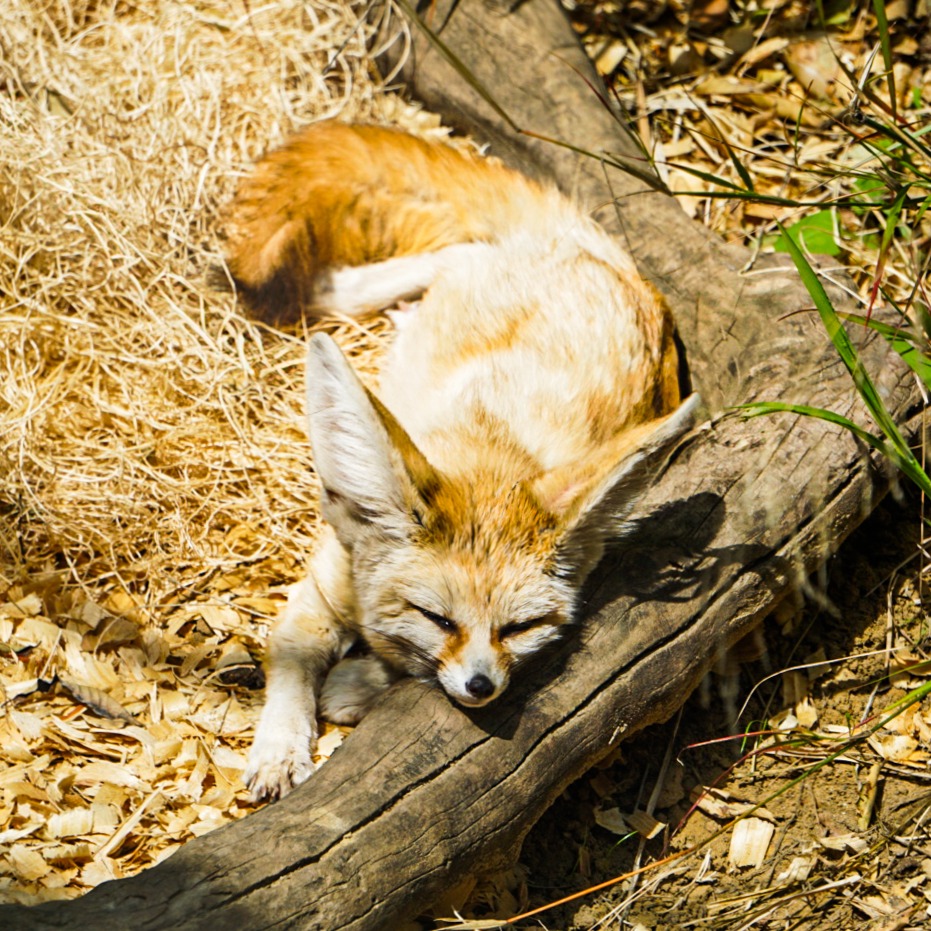- Adaptability of the Fennec Fox to Desert Environments
- The Role of Crepuscular Behavior in the Fennec Fox’s Life
- The Impact of Seasonal Changes on Fennec Fox Habits
- Conservation Efforts and the Importance of Zoo Management for Fennec Foxes
- Fennec Foxes as Ambassadors for Wildlife Conservation
The fennec fox, with its scientific name Vulpes zerda, is a remarkable canid, well-known for its adaptability to the harsh conditions of desert habitats. Found predominantly in the Sahara of North Africa, this small carnivore stands out with its large ears and cream-colored fur, which not only contribute to its adorable appearance but also aid its survival. The species’ ability to endure extreme temperatures and scarce water supplies makes it a fascinating subject of study in zoology and wildlife conservation.
Fennec foxes have developed several physiological and behavioral adaptations that allow them to thrive in deserts. Their large, bat-like ears are perhaps the most distinctive feature, serving multiple purposes. These ears are highly efficient at dissipating heat, which is crucial for regulating body temperature in the scorching daytime environment. Additionally, they enhance the fox’s hearing, enabling it to detect prey, such as insects and small mammals, even beneath the sand. This acute sense of hearing is an invaluable tool in a habitat where food sources can be sparse.
Another notable adaptation is the fennec fox’s fur. The light color not only provides camouflage against the sandy environment but also reflects sunlight, reducing heat absorption. Their thick fur insulates them against cold desert nights. Interestingly, the fur extends to their feet, protecting them from hot sand surfaces. These physical characteristics underscore the fennec fox’s evolutionary journey to becoming a desert specialist.
Fennec foxes are crepuscular animals, most active during the cooler twilight hours of dawn and dusk. This behavior is a direct response to the extreme heat of the desert sun. By avoiding midday sun exposure, fennec foxes conserve vital energy and water. During these twilight hours, they conduct essential activities, such as hunting and social interactions. Their diet typically includes insects, small rodents, fruits, and leaves, reflecting their omnivorous nature.
Seasonal changes play a significant role in the behavior of fennec foxes. As the days lengthen, particularly during the summer months, their activity patterns shift to accommodate the rising temperatures. This results in longer nap periods during the day to avoid the intense heat. The creature’s adaptability to such changes exemplifies its resilience and ability to optimize energy conservation. The phrase "The longer the days get, the warmer the naps stay" aptly encapsulates the relationship between daylight duration and the animal’s resting behavior.
Conservation concerns for the fennec fox arise due to habitat disruption and exploitation. Their popularity as exotic pets has unfortunately led to illegal wildlife trade, posing a serious threat to their population in the wild. Conservationists emphasize the importance of protecting their natural habitats and enforcing regulations against their capture and trade. Zoos also play a pivotal role in conservation efforts. Through carefully managed breeding programs and educational outreach, zoos help ensure the fennec fox population maintains genetic diversity while educating the public on their ecological importance.
Zoo management practices for fennec foxes focus on mimicking their natural habitat to promote natural behaviors and overall well-being. Enclosures are designed to provide plenty of space for digging, as fennec foxes are known for creating elaborate burrow systems in the wild. These dens offer safety from predators and harsh weather conditions. By facilitating such environmental enrichment, zoos help maintain the physical and mental health of these captivating animals.
Fennec foxes serve as powerful ambassadors for wildlife conservation. Their captivating appearance and distinctive adaptations draw public attention, providing a platform to discuss broader ecological issues. By fostering awareness, they inspire action towards environmental stewardship and highlight the importance of conservation initiatives in preserving biodiversity. The educational programs associated with fennec fox exhibits empower visitors to take a proactive role in conservation efforts, ensuring a better future for these and other vulnerable species.
In summary, the fennec fox exemplifies the extraordinary adaptability of life in some of the world’s harshest terrains. Its crepuscular lifestyle, unique adaptations, and ability to adjust to seasonal changes are a testament to evolutionary resilience. Conservation efforts are crucial to safeguarding this species, emphasizing the role of zoo management and the importance of responsible wildlife stewardship. By understanding and appreciating the biology and ecology of fennec foxes, we can work towards more effective conservation strategies, ensuring these desert dwellers continue to thrive.
*****
Source Description
The longer the days get, the warmer the naps stay! 🥰🦊💤
The fennec fox is a small, crepuscular canid that is most active during the twilight hours of the morning and evening and is well adapted to desert temperatures.
📸: Keeper Ariel
Alt-text: One of the fennec foxes cracks its eyes open at Keeper Ariel’s camera as it drifts back into a blissful rest against its fallen tree branch pillow.


